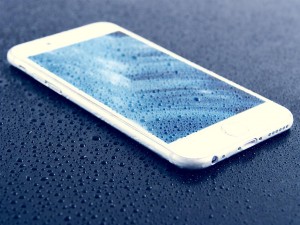 Have you ever forgotten your phone in the balcony on a rainy day? Left it in the pocket of the jeans you have just washed? Accidentally dropped it while relaxing in the Jacuzzi/tub/pool? Or simply had a drink spilled on it? Whatever the circumstances were, chances are your water damaged phone quit working and you were extremely upset. If you just backed up your data the night before, you may not be too affected by this, but if you didn’t have a proper iTunes, iCloud, Google Drive, DropBox, or any other type of backup in place, you may find it difficult to accept the idea of all your contacts, texts, and latest photos be gone forever.
Have you ever forgotten your phone in the balcony on a rainy day? Left it in the pocket of the jeans you have just washed? Accidentally dropped it while relaxing in the Jacuzzi/tub/pool? Or simply had a drink spilled on it? Whatever the circumstances were, chances are your water damaged phone quit working and you were extremely upset. If you just backed up your data the night before, you may not be too affected by this, but if you didn’t have a proper iTunes, iCloud, Google Drive, DropBox, or any other type of backup in place, you may find it difficult to accept the idea of all your contacts, texts, and latest photos be gone forever.
Corrosion Buildup
What damages the phone is not so much the liquid as it is the corrosion that quickly builds up. The main phone components that normally take the most damage in this situation are the battery, screen, charging port, and motherboard. The first thing to do is power off the water damaged phone and pop the battery out if possible. If you know how to disassemble the other components, you should by all means do so and quickly wipe them with a soft cloth. While using a blow dryer is not recommended, leaving the water damaged phone in a bag of rice overnight or longer will help soak up some of the liquid. It will not stop the water residues and minerals from forming corrosion, but it may help slow down the process.
As tempting as it may be, turning on the phone should only be done once the phone’s components are thoroughly dried out and properly cleaned. Otherwise, the motherboard and various connectors will sustain heavy electrical damage, adding more problems to the already challenging phone failure.
Professional Data Recovery Procedures
A water damaged phone is not easily fixed! So how can you get your non backed-up data back? A professional data recovery company that specializes in phone recovery can often save the day. One way to recover the data is through ‘chip-off recovery’, which essentially refers to the extraction of data by connecting directly to the memory chip, where your critical data is stored. However, this recovery method is limited to phones that don’t have their memory chips encrypted, as the case with all Samsung Galaxy devices up to S5, LG G2/G3, and others. But what if your iPhone 6 (and up) or Galaxy Edge are water damaged?
In this case, “reviving” the phone enough to have it recognized by professional recovery tools is the only way to go. The process begins with a full disassembly of the various phone components followed by an initial board-level inspection and deep cleaning procedures using special solutions. Once the corrosion is successfully removed, a micro-soldering repair of the faulty components begins. A deep knowledge of what each component is responsible for and how they all work together is essential for the success of the recovery procedure as, otherwise, irreversible damage can be EASILY caused, resulting in a possible permanent data loss.
It is not always possible to visually see the damage (even with the use of a microscope), which is when the use of highly technical schematics and advanced diagnostic software are required. Once the phone is responsive, it is not uncommon to encounter logical issues with the data, which call for additional recovery procedures to be preformed before any usable data can be successfully recovered.
Conclusion
If your phone ever gets water damaged, it is important that you immediately turn it off, remove the battery, and take as many of its components apart as possible. Wiping and drying them well will help control the damage although it is unlikely to fix the problem as some corrosion will inevitably build up inside the phone components. If the data on the water damaged phone is critical and not backed up, it is recommended to seek the help of professionals with extensive water damaged phone data recovery experience.